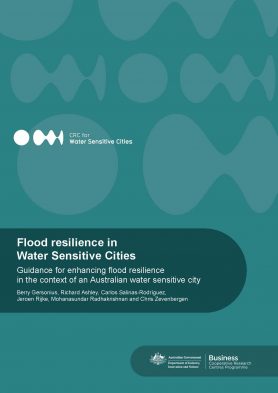Flood resilience in water sensitive cities: Guidance for enhancing flood resilience in the context of an Australian water sensitive city
Introduction
Although integrated water management (IWM) has been aspired to by many for decades, the popularity of trying to manage water as a cycle has grown rapidly since the early 1990s, despite there being no substantive examples of the delivery of IWM (e.g. Adamowicz, 2011). Such approaches are being used to maximise the quality and value of infrastructure investments and ensure legitimacy amongst the stakeholders. For example, there is a growing awareness that by using green infrastructure (Gaffin et al., 2012) many societal benefits can accrue in urban areas and at the same time ecosystem services can both be supported and also support human living. Several approaches to managing and using water more effectively and comprehensively are documented worldwide and the once contradictory vision that flood risk, water stress management and other uses of water have to be managed separately is being replaced by an integrated view that now sees the water cycle as a coherent and many faceted system to be utilised in harmony by humans and ecosystems.
